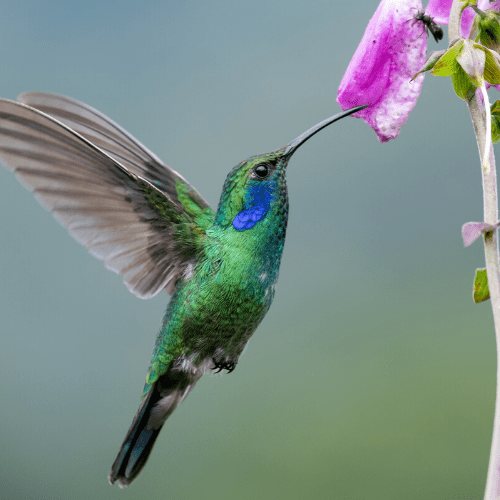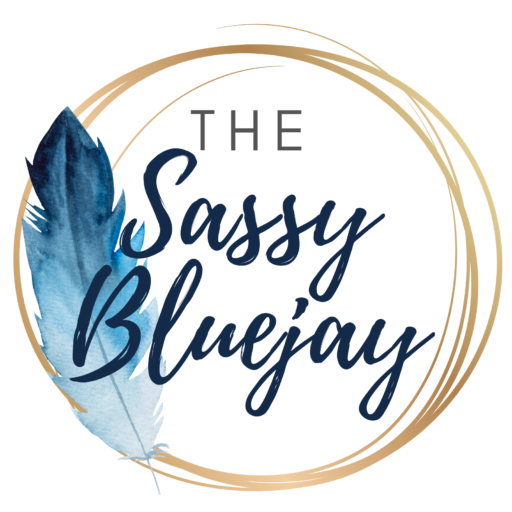
Hummingbird Heaven! Attract Hundreds of Rufous, Anna’s and Ruby Throated Birds to Your Yard
How to guarantee you’ll have rufous hummingbirds and other species flocking to your feeder all fall, spring, and summer
From April to September, our backyard is abuzz with the familiar sound of rufous hummingbirds. With four different hummingbird feeders to choose from, our yard becomes Grand Central Station as dozens of birds come to rely on the safety and food we provide for these fast-flying birds.
It’s as though they don’t even mind us! These hungry little birds are tenacious, often vying for their position at the feeder and battling with their high-pitch squeaks to see who earns the right to the next taste.
This hasn’t always been the case! Over the years we’ve tried several tricks to lure them in. Here are a few ways we’ve found to turn these somewhat timid little flappers into bold, often competitive guests in our backyard oasis.
Choosing a Hummingbird Feeder
Not all hummingbird feeders are alike. Sure you can find low-cost, thin plastic ones at dollar stores and discount outlets. But you’ll definitely get what you pay for! In my experience, you’re buying one season’s worth of hummingbirds – then you’re replacing your feeders next year.
Mother Nature is hared on feeders. Hot summer sun, blustery days, sugar water – these all wear down the feeders from day to day. Instead of buying hummingbird feeders annually, invest now in a few mid-grade, top quality feeders and see the difference! If you’re serious about creating a hummingbird oasis in your yard, invest slightly more money to get a few really good feeders.
How many feeders should you buy? I recommended buying at least one feeder per “yard” area – that is, if you have a front yard and back yard, get one feeder for each. If you have a back patio or a balcony, one feeder will do. I personally have 4 feeders, since I have flowers and gardens on all sides of my house. Hummingbirds can get very territorial, especially rufous hummingbirds, so it’s best to have an extra feeder if one is in use.
Here’s a few of my favorite feeders – I have the left-most and center feeders and they’ve lasted 5 years and running!
When shopping for a hummingbird feeder, I look for the following features:
- Glass so that plastic isn’t leeching into the nectar. If plastic isn’t good for humans, it’s certainly not healthy for birds!
- Wide Mouth for easy cleaning with a bottle brush
- Sturdy Hook for hanging

Keep your Nectar Recipe Simple
With as much traffic as we see from rufous hummingbirds alone, I need strategy when it comes to having enough food on hand for the hummingbirds. I make one gallon of nectar at a time and store it in my fridge.
I confess, before I knew much about birds I was lured into buying pre-made nectar powders for hummingbirds. I learned from local birding experts that these mixes (although convenient and colorful) are actually filled with elements that aren’t essential to hummers including dyes. So I’ve moved on to a simpler (and hopefully healthier) recipe. It stores just as well in the fridge, and we go through it quickly with our amount of traffic!
My recipe for nectar is a 1:4 ratio (sugar to water). First, I take a clean gallon jug and fill it with water. Then I pour the water, along with 4 cups of sugar, into a large pot and bring it to a boil. (There are 16 cups of water in a gallon so there’s my 1:4 ratio.) Once boiling, I remove it from heat and allow it to cool, stirring occasionally (approx. 1 hour).
I write the date on the outside of the jug and tuck it in the back of the refrigerator. Now it’s ready to go!
Prep and Care for your Feeders

Sugar water is sticky, tricky business! If it’s hummingbirds you want, then it’s important to keep the birds safe by taking care of your feeders. The rufous hummingbirds don’t seem too picky but I want to keep them healthy and coming back for more!
In my yard, I have three issues that arise: 1) ants, 2) evaporation, and 3) mold. Cleaning out my feeders weekly takes care of the issues related to all three of these problems.
Preventing Ants from Getting In Your Feeders
No matter which region you live in, ants are one of the most common issues when it comes to hummingbird feeders.
Ants make their way up my stakes and into the feeders. They feast on the yummy nectar and speed up how quickly the nectar goes bad, if they get inside.
Last year I invested in several of these Insect Guards which were SO worth it! There are lots of varieties on the market, but these cute little ones had great reviews on Amazon and have earned their praise in my yard!
They’re very simple to use. I use my watering can every few days to top off the water. This creates a moat that drowns the ants before they can drink the nectar.
Problem solved!
The Issue of Heat and Evaporation
That brings me to problem #2: evaporation. I live in the high desert of the Pacific Northwest. Any water left outdoors evaporates quickly into our atmosphere (that’s why I have to fill my ant moats twice per week).
Because it’s so dry here and we have intense sunshine, the sugar water quickly gets sludgy due to water evaporating and sugar being left behind. Those lucky hummers! At the end of the week, they are enjoying what looks like pure sugar syrup. No wonder we have such high traffic! When I see my feeders getting low, I know it’s time to clean and refill the feeders.
There’s no real solution for the evaporation issue. However, I have made the following small changes and it’s helped:
- Hanging feeders out of direct sunlight
- Switching from plastic to glass feeders
- Check feeders often to ensure they’re not getting too hot
- Hanging feeders in a breezy part of the yard
Combating Mold in Hummingbird Feeders
Finally, problem #3: MOLD. sugar + sunshine + dead ants + heat = excellent mold-growing conditions!
Washing my feeders weekly keeps the nectar at its best and ensure that our visitors don’t get sick. Mold in bird feeders is not like the mold you find when when answer that question, “What stinks in this fridge?” No, it’s a subtle black mold that often forms around the mouth, where the two parts of the feeder connect. Even if you can’t see it, it’s really important to clean your feeders weekly! This will help keep the birds healthy.
Cleaning Your Hummingbird Feeders
It’s important to wash and sanitize your hummingbird feeders at every refill and 1-2x weekly, especially if you notice ants, sludgy sugar, or mold anywhere on the feeder.
Soak the glass containers in hot vinegar solution for about 30 minutes (1 part vinegar to 4 parts hot water). Then use a baby bottle brush to scrub them clean.
Finally, to ensure there is no remaining vinegar, give them a good rinse with very hot water and air-dry.
If you’re seeing mold or lingering scum on your feeders, consider if it’s time to buy a new feeder or consider using a very weak bleach solution as a last resort (there are instructions for this on other sites).








